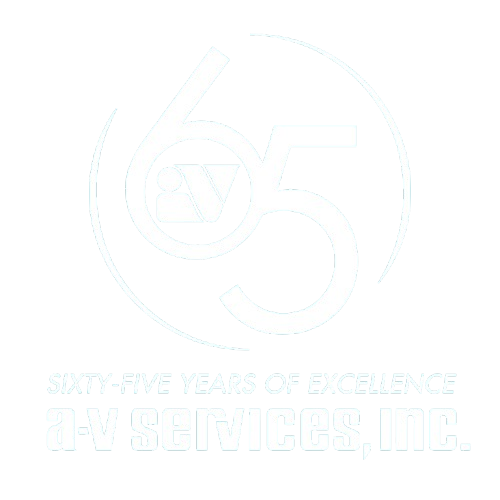The way businesses access and use technology is changing. The traditional model of purchasing equipment outright is giving way to more flexible, subscription-based approaches. This shift isn’t just a trend; it’s a strategic move that mirrors how we consume services in our personal lives. From streaming movies to software subscriptions, we prioritize access over ownership. Now, this mindset is reshaping how companies acquire, manage, and upgrade their essential workplace technologies.
This post will explore the move toward subscription models for business technology. We will look at why the “as-a-service” approach is gaining momentum and how it helps companies stay current, conserve capital, and reduce operational risks. By understanding these shifts, you can position your organization to make smarter, more future-focused technology decisions.
THE RISE OF THE SUBSCRIPTION MODEL
For years, the standard practice for acquiring new workplace systems was a large, one-time capital expenditure (CapEx). You buy the equipment, you own it, and you are responsible for it until it becomes obsolete. However, as an article in Commercial Integrator points out, this model is becoming outdated. The value isn’t in owning a
rapidly depreciating asset; it’s in the capability the technology provides.
The subscription model, or Technology-as-a-Service (TaaS), reframes the entire equation. Instead of a lump-sum payment, businesses pay a recurring monthly fee for access to a complete solution. This package typically includes hardware, software, installation, maintenance, and even technology refreshes down the line. It’s a move from
owning equipment to consuming a service.
This approach helps businesses mitigate several risks associated with ownership. As the Commercial Integrator article highlights, technology ownership handcuffs companies to obsolete systems. With a service model, the risk of obsolescence shifts to the provider, ensuring you always have access to modern tools.
Why “As-A-Service” Makes Financial Sense
The logic behind the as-a-service model is compelling, especially when you break down the economics of a technology purchase. Many organizations are surprised to learn how much of their initial investment goes toward non-recoverable costs.
Hidden Costs of Ownership
Think about a typical technology installation. The bill of materials includes more than just hardware. It covers:
- Design and Engineering: The expertise required to plan the system.
- Labor: The physical installation and configuration.
- Software and Licensing: The brains that make the hardware work.
- Provider Profit: The margins for the manufacturer, distributor, and integrator.
According to Commercial Integrator, these non-recoverable costs can account for 50% to 80% of the total project price. The day after installation, that portion of your investment is gone. A subscription model allows you to finance these costs over time, preserving capital for other revenue-generating activities. Technology is essential for communication and operations, but it’s a depreciating asset, not a financial investment that grows in value.
ALIGNING WITH BROADER TECHNOLOGY TRENDS
The shift to service-based models is part of a larger evolution in how we interact with technology. The McKinsey Technology Trends Outlook for 2025 identifies several key themes that reinforce this change, including the rise of autonomous systems and new models for human-machine collaboration.
As workplaces integrate more sophisticated tech—from AI-driven meeting platforms to immersive collaboration tools—the complexity of managing these systems increases. A service model simplifies this by bundling management and support, allowing your teams to focus on using the technology rather than maintaining it.
Furthermore, trends highlighted by Simplilearn, like the expansion of 5G, the Internet of Things (IoT), and edge computing, mean our technology ecosystems are becoming more interconnected and data-reliant. These systems require continuous updates and security management. A TaaS provider handles this ongoing maintenance, ensuring all components work together seamlessly and securely. This is especially critical as cybersecurity remains a top concern for businesses of all sizes.
THE STRATEGIC ADVANTAGES OF A SERVICE MODEL
Reduces Risk: System failures can disrupt business operations significantly. A service agreement includes maintenance and support to minimize downtime. It also mitigates the risk of your technology becoming outdated before you’ve seen a full return on your investment.
Improves Scalability: A subscription model allows you to scale your technology solutions up or down as your business needs change. This flexibility is difficult to achieve with a traditional ownership model, which often requires new, large-scale purchases to accommodate growth.
Frees Up Internal Resources: Managing and troubleshooting complex technology systems can be a drain on your IT department. Offloading this responsibility to a specialized provider frees up your team to focus on strategic initiatives that drive business value.
Provides Predictable Costs: A fixed monthly payment makes budgeting for technology simple and predictable. You can avoid the unexpected and often substantial costs associated with emergency repairs or unplanned upgrades.
IS YOUR BUSINESS READY FOR THE FUTURE?
The move toward as-a-service models for workplace technology is a logical evolution. It aligns with how we consume other services and offers clear financial and strategic benefits. By shifting the focus from ownership to access, you empower your organization to stay agile, competitive, and technologically current.
At AV Services, we help businesses navigate this changing landscape. We design, install, and manage technology solutions that support your goals, whether through a traditional purchase or a flexible service-based subscription. If you’re ready to explore how a modern approach to technology can benefit your organization, let’s connect.

